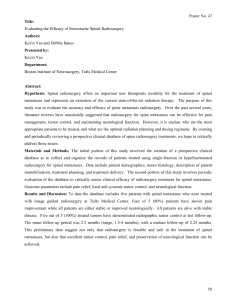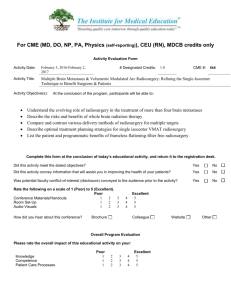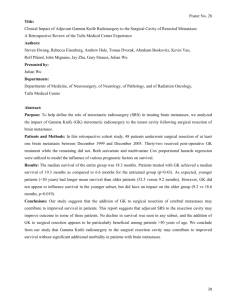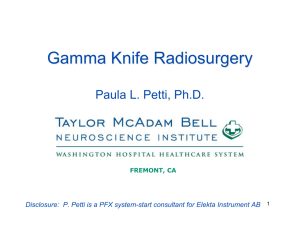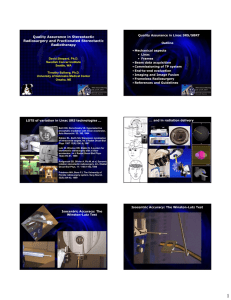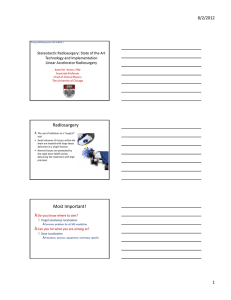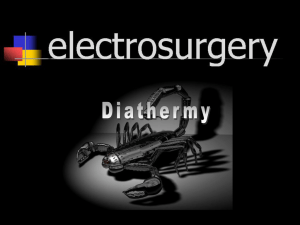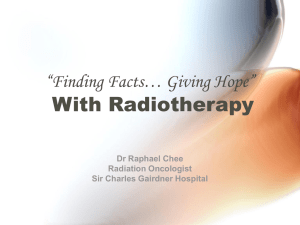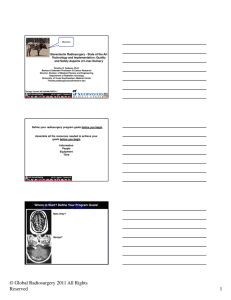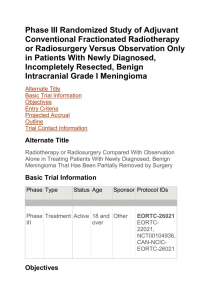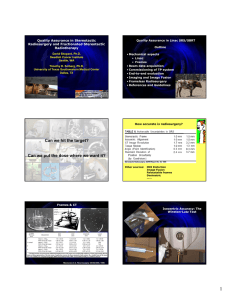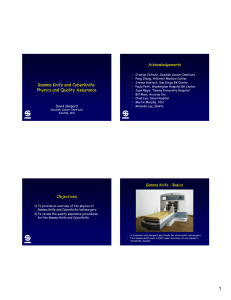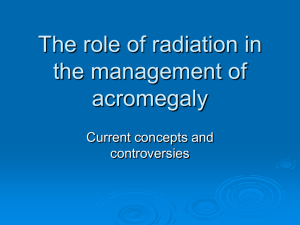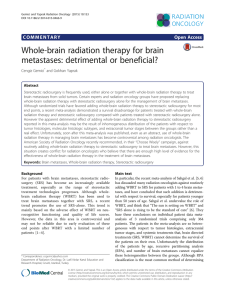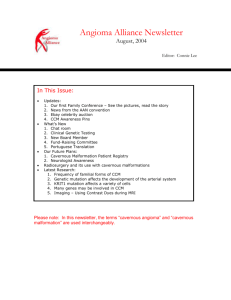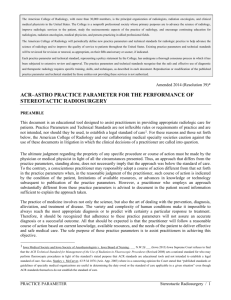1028 - Gamma knife surgery.PDF - the Medical Services Advisory
advertisement
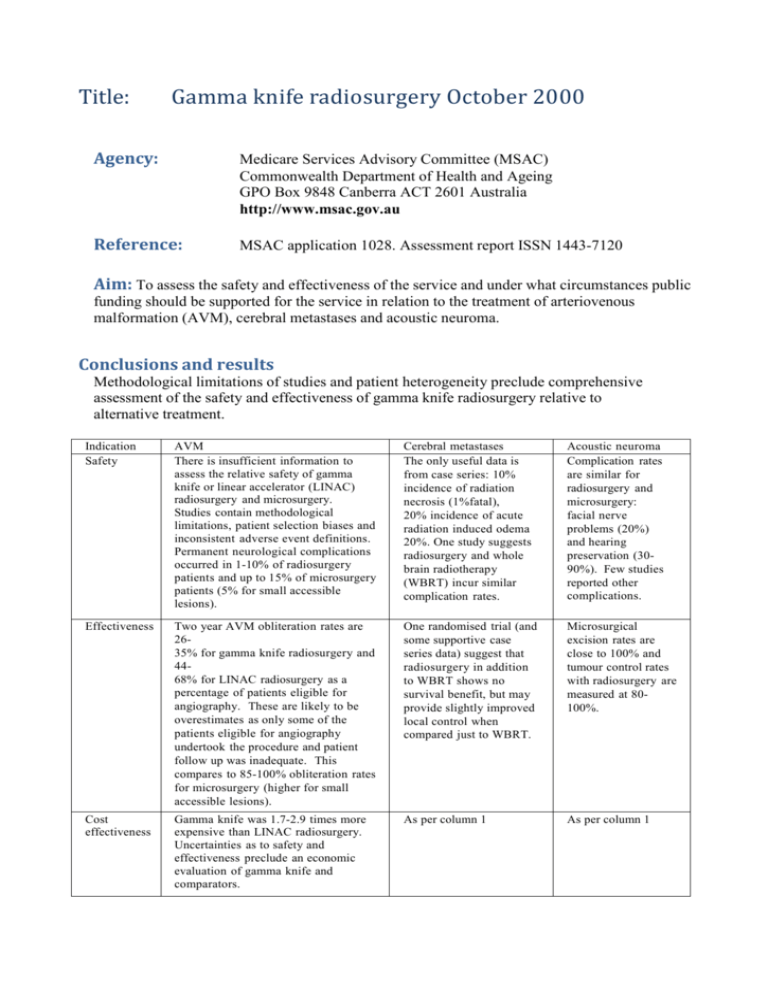
Title: Gamma knife radiosurgery October 2000 Agency: Medicare Services Advisory Committee (MSAC) Commonwealth Department of Health and Ageing GPO Box 9848 Canberra ACT 2601 Australia http://www.msac.gov.au Reference: MSAC application 1028. Assessment report ISSN 1443-7120 Aim: To assess the safety and effectiveness of the service and under what circumstances public funding should be supported for the service in relation to the treatment of arteriovenous malformation (AVM), cerebral metastases and acoustic neuroma. Conclusions and results Methodological limitations of studies and patient heterogeneity preclude comprehensive assessment of the safety and effectiveness of gamma knife radiosurgery relative to alternative treatment. Indication Safety AVM There is insufficient information to assess the relative safety of gamma knife or linear accelerator (LINAC) radiosurgery and microsurgery. Studies contain methodological limitations, patient selection biases and inconsistent adverse event definitions. Permanent neurological complications occurred in 1-10% of radiosurgery patients and up to 15% of microsurgery patients (5% for small accessible lesions). Cerebral metastases The only useful data is from case series: 10% incidence of radiation necrosis (1%fatal), 20% incidence of acute radiation induced odema 20%. One study suggests radiosurgery and whole brain radiotherapy (WBRT) incur similar complication rates. Acoustic neuroma Complication rates are similar for radiosurgery and microsurgery: facial nerve problems (20%) and hearing preservation (3090%). Few studies reported other complications. Effectiveness Two year AVM obliteration rates are 2635% for gamma knife radiosurgery and 4468% for LINAC radiosurgery as a percentage of patients eligible for angiography. These are likely to be overestimates as only some of the patients eligible for angiography undertook the procedure and patient follow up was inadequate. This compares to 85-100% obliteration rates for microsurgery (higher for small accessible lesions). One randomised trial (and some supportive case series data) suggest that radiosurgery in addition to WBRT shows no survival benefit, but may provide slightly improved local control when compared just to WBRT. Microsurgical excision rates are close to 100% and tumour control rates with radiosurgery are measured at 80100%. Cost effectiveness Gamma knife was 1.7-2.9 times more expensive than LINAC radiosurgery. Uncertainties as to safety and effectiveness preclude an economic evaluation of gamma knife and comparators. As per column 1 As per column 1 Recommendation Public funding should not be supported for gamma knife radiosurgery at this time. Method MSAC conducted a systematic review of medical literature using Medline, PreMedline, EmBase, the Cochrane Library, ISTAHC, Current Contends, HealthSTAR and NHS databases: (DARE, EED, HTA) from commencement until March 2000. Internet sites of certain health technology assessment groups were also included. The AANS and CNS Meeting Abstract Archive and the table of contents for Radiosurgery were also searched.
